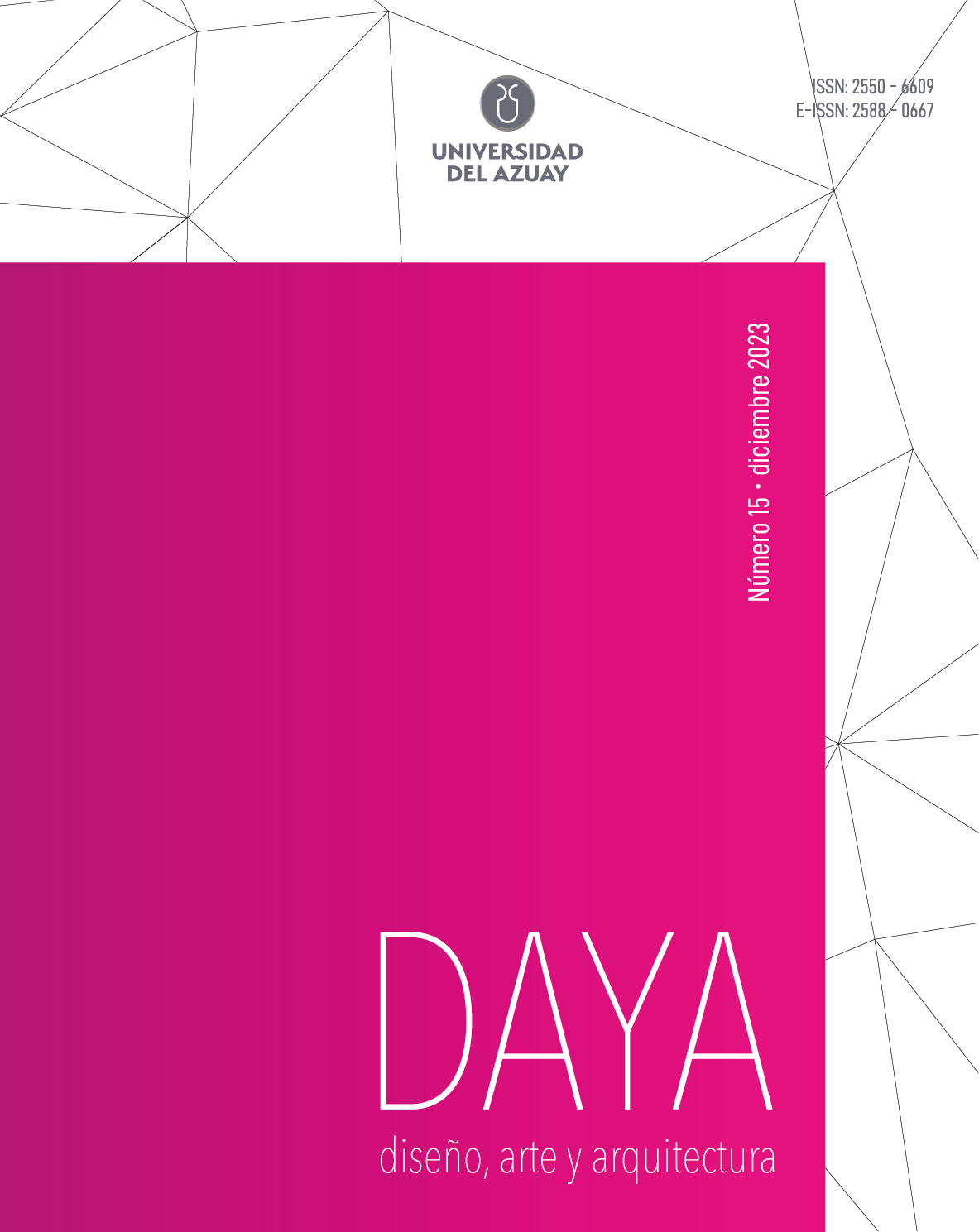USO DE MATERIALES DE REVESTIMIENTO DE VIVIENDAS PATRIMONIALES EN LA CIUDAD DE CUENCA PARA GENERAR CRITERIOS DE DISEÑO INTERIOR DE RESTAURANTES
DOI :
https://doi.org/10.33324/daya.vi15.713Mots-clés :
Resignificación, Conservación material, Diseño Interior, Restaurantes, IdentidadRésumé
La presente investigación tiene como objetivo principal plantear criterios para la recuperación de técnicas y materiales de revestimientos existentes en el espacio interior de viviendas patrimoniales de la ciudad de Cuenca, para su utilización en el rediseño de restaurantes. Para alcanzar dicho objetivo, se considera la preservación de los valores arquitectónicos. La metodología que se aplica es cualitativa, cuasi experimental, debido a que el caso de estudio no se lo determina de manera aleatoria si no se lo selecciona previamente, de manera que la revisión bibliográfica permite comprender la reflexión sobre la importancia de la recuperación de técnicas y materiales de revestimientos en pisos, paredes y cielo rasos existentes en viviendas patrimoniales del
Centro Histórico de Cuenca. Se pretende que, mediante el aporte y planteo de criterios de diseño, sirva para la utilización en el rediseño interior de restaurantes. Para hablar de diseño interior en la ciudad de Cuenca, es necesario conocer la relación estrecha entre arquitectura globalizada y arquitectura tradicional que debe existir, pues adaptarse a los cambios generacionales y procesos constructivos es inevitable. Sin embargo, se pretende mantener ciertas características propias y singulares de la ciudad que la caracteriza, la distingue de otras ciudades, le da un sentido de pertenencia, le brinda identidad y permite a los usuarios identificar un diseño local como propio de un sitio.
Palabras clave: Resignificación, Conservación material, Diseño Interior, Restaurantes, Identidad.
Abstract
The main objective of this research is to propose criteria for the recovery of existing coating techniques and materials in the interior space of heritage homes in the city of Cuenca for use in the redesign of restaurants. To achieve this objective, the preservation of architectural values is considered. The methodology that is applied is qualitative quasi-experimental because the case study is not randomly determined but previously selected, in such a way that the bibliographical review allows us to understand the reflection on the importance of the recovery of techniques and materials of floor, wall and ceiling coverings existing in heritage homes in the
historic center of Cuenca. It is intended that, through the contribution and proposal of design criteria, it can be used in the interior redesign of restaurants. To talk about interior design in the city of Cuenca, it is necessary to know the close relationship that must exist between globalized architecture and traditional architecture, since adapting to generational changes and construction processes is inevitable. However, the aim is to maintain certain unique characteristics of the city that characterizes it, distinguishes it from other cities, give it a sense of belonging, provide it with identity and allow users to identify a local design as belonging to a place.
Keywords: Resignification, material conservation, interior design, restaurants, identity.
Téléchargements
Téléchargements
Publié-e
Comment citer
Numéro
Rubrique
Licence

Cette œuvre est sous licence Creative Commons Attribution - Pas d'Utilisation Commerciale - Partage dans les Mêmes Conditions 4.0 International.



